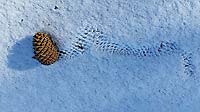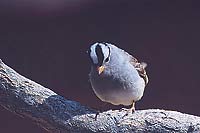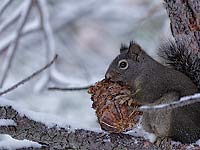Winter is not a season, it’s an occupation. ~Sinclair Lewis
 Winter in the high desert landscape of Southern Utah may be relatively short, compared to the long winters in neighboring Rocky Mountain States. As November’s chilly nights plunge into the icy grip of winter, a quiet begins to settle over the canyons.
Winter in the high desert landscape of Southern Utah may be relatively short, compared to the long winters in neighboring Rocky Mountain States. As November’s chilly nights plunge into the icy grip of winter, a quiet begins to settle over the canyons.
Though the average high temperature in Arches NP is 45°F in December, nearly 75 percent of the days (on average) don’t push pass the freezing mark. At 32°F with a slight breeze of 10 MPH, the resulting wind chill factor makes the temperature feel like 24°F. Like the local cowboys say, “You wouldn’t want to get caught out there with just your spurs on.”
One can gear up for cold, but it’s harder to deal with snow and ice on the slickrock. Trails with exposure or drop-offs suddenly require some contemplation or rerouting. Roads can also present a challenge especially those dirt roads that can turn into quagmires because of rain or snow. 
Nonetheless, even with all these conditions presenting obstacles, exploring the desert in winter is a wonderful opportunity to find solitude and solace. It might just be you and a solitary raven hoarsely calling from some gnarled tree. Sounds such as small rocks being dislodged down a slope which might betray the presence of desert bighorn seem amplified in the winter stillness. The sweet warbles of songbirds become replaced with subtle chips and twitters of sparrows, finches, and juncos - hardy birds that endure winter’s cold.
The additional absence of other hikers means that the passage of wildlife recorded by hoof and paw prints won’t be obscured by human footprints. Careful observers will be able to read the landscape for wildlife sign. Many small mammals are still active this time of year unlike those such as reptiles, amphibians, bears, and marmots that have chosen to slumber away winter in some cozy den. One of those hibernating reptiles is the small side-blotched lizard but on warm winter days, you might encounter one of these creatures scurrying about. Because their small body mass does not require high temperatures to become active, these lizards may appear on warm winter days.
 Small mammals such as cottontails and jackrabbits are active in winter. The rabbits and hares in turn keep the great horned owls, golden eagles, and red-tailed hawks supplied with winter meals. A trip up through the Cisco Desert this time of year often offers great viewing of these and other birds of prey that have flocked to the region to spend their winter dining “al Rodentia.”
Small mammals such as cottontails and jackrabbits are active in winter. The rabbits and hares in turn keep the great horned owls, golden eagles, and red-tailed hawks supplied with winter meals. A trip up through the Cisco Desert this time of year often offers great viewing of these and other birds of prey that have flocked to the region to spend their winter dining “al Rodentia.”
Winter is a tough time of year for wildlife. The theme is hang on and survive and await the greening of spring. This age-old pattern has been repeating itself for millennium. Though seemingly harsh, the process keeps the herds healthy in the long run. Wildlife watchers that enjoy experiencing wildlife in winter understand that even minimal disturbances may cause animals to burn up energy reserves just to put some distance between themselves and their observers. So, tread lightly in winter and enjoy the solitude and solace the season has to offer.

 Winter in the high desert landscape of Southern Utah may be relatively short, compared to the long winters in neighboring Rocky Mountain States. As November’s chilly nights plunge into the icy grip of winter, a quiet begins to settle over the canyons.
Winter in the high desert landscape of Southern Utah may be relatively short, compared to the long winters in neighboring Rocky Mountain States. As November’s chilly nights plunge into the icy grip of winter, a quiet begins to settle over the canyons.
 Small mammals such as cottontails and jackrabbits are active in winter. The rabbits and hares in turn keep the great horned owls, golden eagles, and red-tailed hawks supplied with winter meals. A trip up through the Cisco Desert this time of year often offers great viewing of these and other birds of prey that have flocked to the region to spend their winter dining “al Rodentia.”
Small mammals such as cottontails and jackrabbits are active in winter. The rabbits and hares in turn keep the great horned owls, golden eagles, and red-tailed hawks supplied with winter meals. A trip up through the Cisco Desert this time of year often offers great viewing of these and other birds of prey that have flocked to the region to spend their winter dining “al Rodentia.”